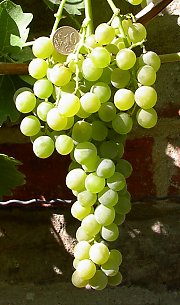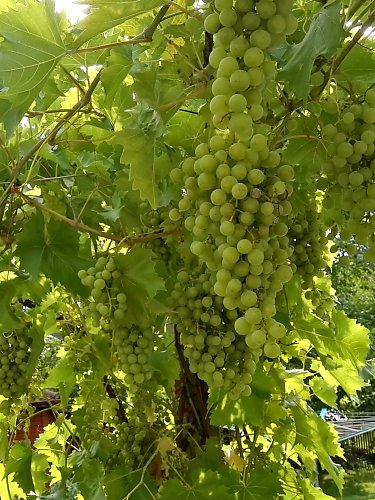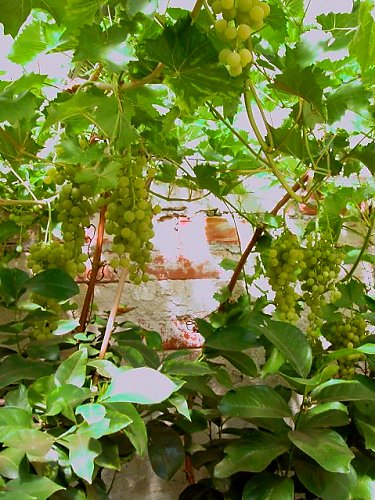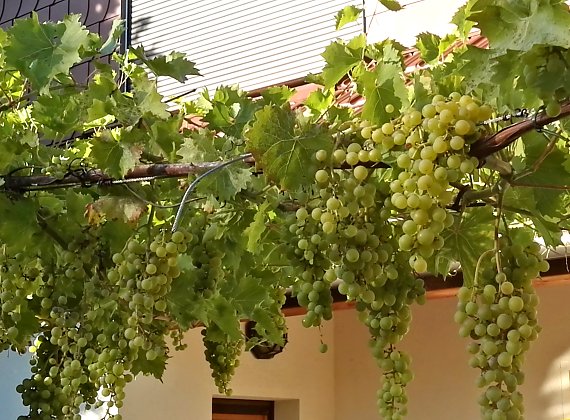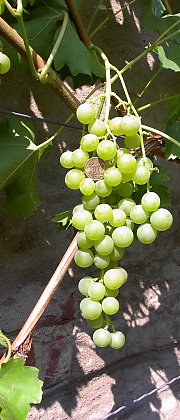Table Grape "Birstaler Muscat"
"Birstaler Muscat" is one of the two varieties we recommend for trellising on a wall or facade. After 15 years of experience, it is our favourite! The berry has a neutral or slightly muscat (nutmeg) taste, as is expected from a good grape, and without the unpleasant "foxy" tone. The ripe grapes can be left on the vine for up to 6 weeks or longer and harvested gradually. Their resistance to mildew is so high that spraying is not needed, and they won't get the attention from birds and wasps that other varieites do. An invaluable table grape for facades! (a Swiss breed, also known as "Muscat Birstaler")
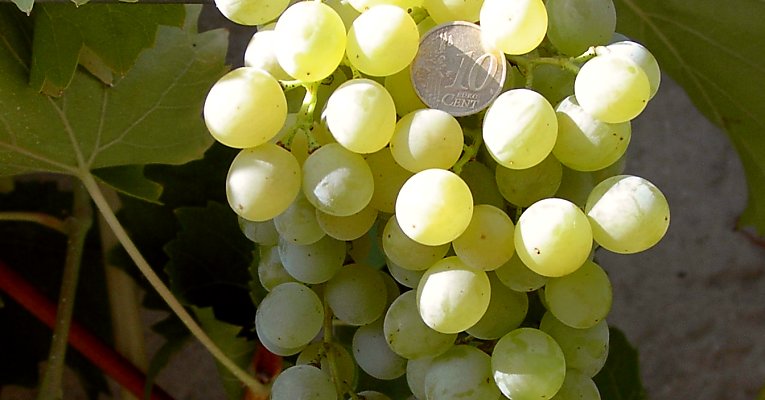
Availability / Price
Bare-rooted from March - May. Reserving a plant (as early as January) is recommended due to limited annual quantity. Available all year as a potted vine (3 litre).
>>> Price (bare-root) / Price (potted plant)
>>> Currently sold out <<<<<
Characteristics
"Birstaler Muscat" is a cross between the extremely productive (high fruit-yielding) "Bacchus" and the fungus-resistant "Seyval Blanc," universally suitable as a table grape and for grape juice, and especially suitable for commercial organic cultivation due to its exceptinoally high resistance to fungus -- even in wet years, in regions with high humidity (like North Germany), or in areas where mildew-infested vines jeopardise other nearby grapevines, such as in wine-growing regions). The high fungus resistance makes this grape also ideal for greenhouse cultivation; can also be grown in windy locations. The grapes can hang on the vines for a long time after full ripeness, so the extended "harvest window" prolongs the grape season! Another plus: yellow-green varieties-- unlike the blue ones -- are less visible to wasps and birds, and therefore more protected (already the case with mass-plantings). Apart from that, same as the "Palatina." The grape bunch shown here (from the research garden Radebeul) comes from a plant that has *not* been thinned out-- hence the relatively small berries (only about 1.5 cm).
Grape Clusters
From the 2nd or 3rd year onward:-- medium to large size bunches, 15 - 25 cm long. Yield is usually very high, manual thinning down to 1-2 grape bunches per cane immediately after flowering is necessary for good berry size and to promote the ripening process.
Berries (Grapes)
Green-yellow to yellow, medium size with a diameter between 1.5 - 2 cm, fruity sweet taste with a fine nutmeg tone, very sweet, becomes raisin-like when overripe after 6 weeks of hanging. Very few seeds.

